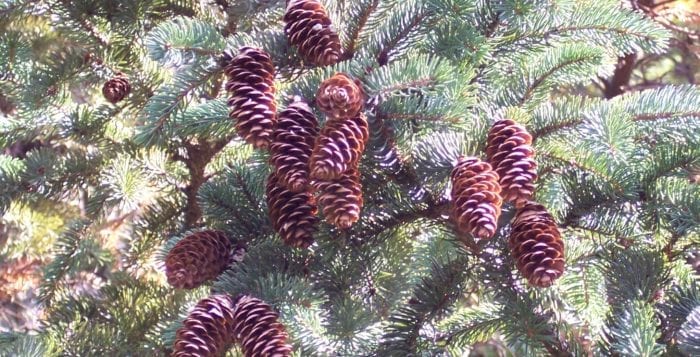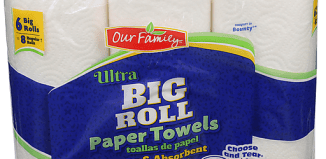Gardening: Adding conifers to your garden — Part II
By Ellen Barcel
If you decide to plant one or more conifers this spring, here’s a quick rundown of some interesting plants to consider. If you are growing a particular conifer to gather the cones for crafts, make sure you select the correct tree.
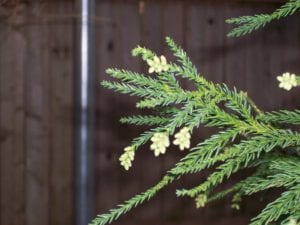
Crytomeria japonica (in the cyprus family) has mature cones that are very unusual, being small, green and roundish. The tree can grow to an enormous size. As its name suggests, it is a native of Japan.
The Leyland cypress has been advertised in recent years as a fast-growing privacy hedge or, more accurately, wall. This is a cross between the Monterey cypress and the Nootka cypress. It can reach 100 feet at maturity and can grow as much as three feet a year. If you’re looking for a quick-growing screen, this is one to consider, but they do take up a lot of space.
Arborvitae are also in the cypress family. They, too, are fast growing but not as fast as the Leyland cypress. As with many evergreen, arborvitae are very difficult to prune attractively. Depending on the species, they can grow to great heights, so read the tag carefully before buying and planting them. Then, make sure you give them enough room to spread out.
All three of the above have a feathery appearance, rather than the sharp needles so many of us associate with conifers.
Fir trees are your typical Christmas trees and include Balsam fir and Frasier fir with short, flat needles and typical pine cones. There are approximately 50 different species of fir trees, but they are not fast growers. If you’re looking for a tree that won’t quickly take over, consider a fir. Size and shape vary so research your choice to see if it’s what you want for a particular craft.
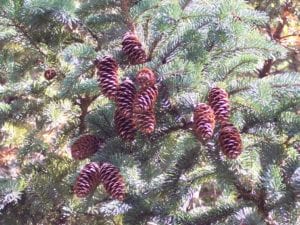
Pine trees grow well in acidic soil, so you’ll notice many pine trees on Long Island. There are over 100 species of pine including the eastern white pine. They have longish needles and their cones are round in shape. They don’t have the elegance, to my mind, of firs and spruce but they are quick growers and provide a high privacy screen, many losing their lower limbs as they mature. Be careful where you plant them because of their sticky sap that can get on your car if you park it in their shade.
There are a number of spruce trees you might want to consider for your garden. Dwarf Alberta spruce, a sport of the larger white spruce, is used extensively in landscaping because of its small stature and thick evergreen foliage. It can, however, on rare occasions revert to type. It’s accustomed to the cold and does well in U.S.D.A. hardiness zones 2 through 7 (Long Island is 7). It generally doesn’t produce cones.
Another spruce is the Colorado blue spruce with its beautiful bluish needles. This is an elegant, medium-sized tree and not particularly a rapid grower.
Norway spruce is a magnificent tree. The branches on mature specimens drape down gracefully. The tree, however, is enormous at maturity. One in my neighborhood dwarfed a two-story house and it was planted about 45 years ago. If you have room for this magnificent tree, then go for it, but beware of how large this one can get. It’s cones are slightly curved and about five to six inches long.
Hemlock are beautiful and fast growing evergreens, but they have a major problem. They have been attacked by woolly adelgids (the appearance of white, cottony deposits on the needles are the egg cases), to the point that few have survived without yearly spraying. Even treated they do not always survive. They do make a quick growing and beautiful privacy hedge.
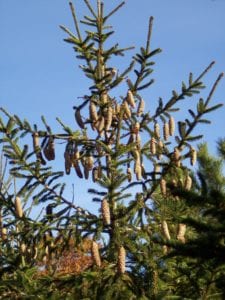
Dawn redwood Metasequoia, is a beautiful and fascinating tree, but unfortunately is not an evergreen. Unlike most conifers, this one is deciduous, that is, it loses its needles in fall. So, during winter you have a tree as bare as your maple or oak. Considered a “living fossil” the dawn redwood was believed extinct until it was found growing in the 1940s in China.
Yews (taxus) are small trees and shrubs with unusual cones, which remind one of red berries, rather than the more typical, woody, brown-layered cones. Many birds enjoy eating the seeds. Various species of yews are native to North America, Europe and Asia. Even mature, specimens are relatively small.
Cedar are beautiful, but very large evergreen conifers. The golden deodar cedar has branches tinged with gold, while the blue Atlas cedar have the same bluish cast as the Colorado blue spruce. Cedar cones tend to be very small, but the tree itself can get quite large. They can easily spread out to 40 feet across at the base at maturity. This can be a problem for gardeners who don’t realize their mature size and plant them right up against their house. There are also weeping versions of blue cedar, which are smaller in height but really spread out to make a great specimen plant as well as living screen.
So, do your homework and select just that perfect tree for next year’s garden as well as your craft projects.
Ellen Barcel is a freelance writer and master gardener. To reach Cornell Cooperative Extension and its Master Gardener program, call 631-727-7850.

